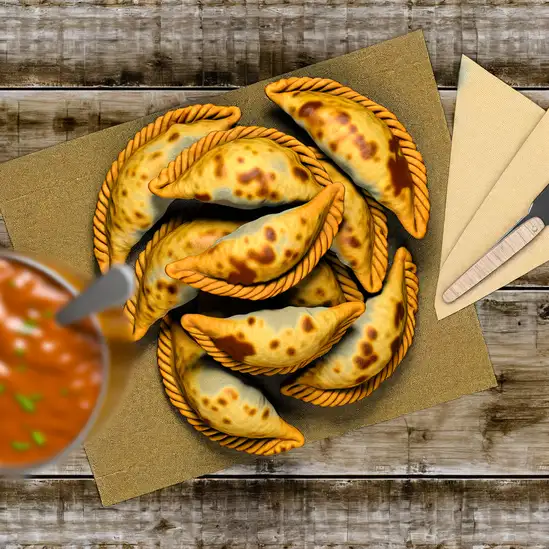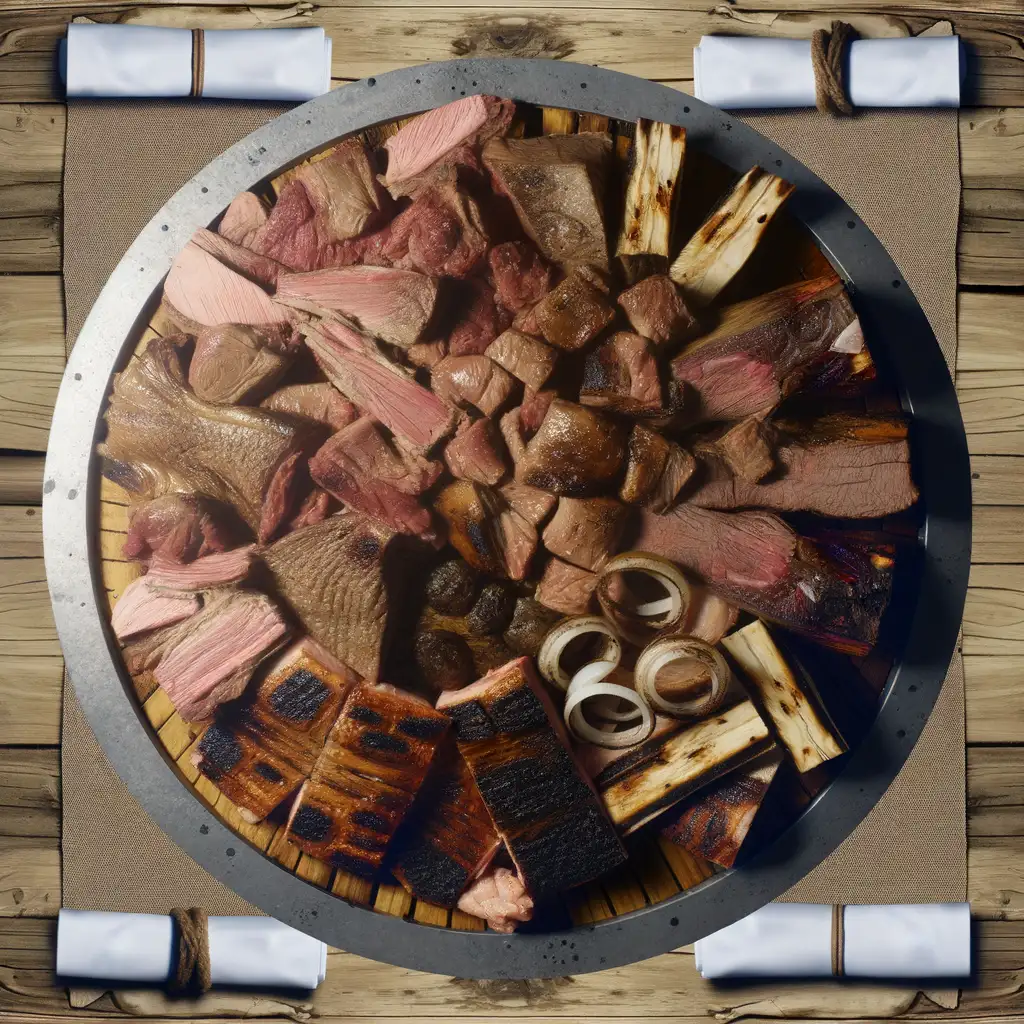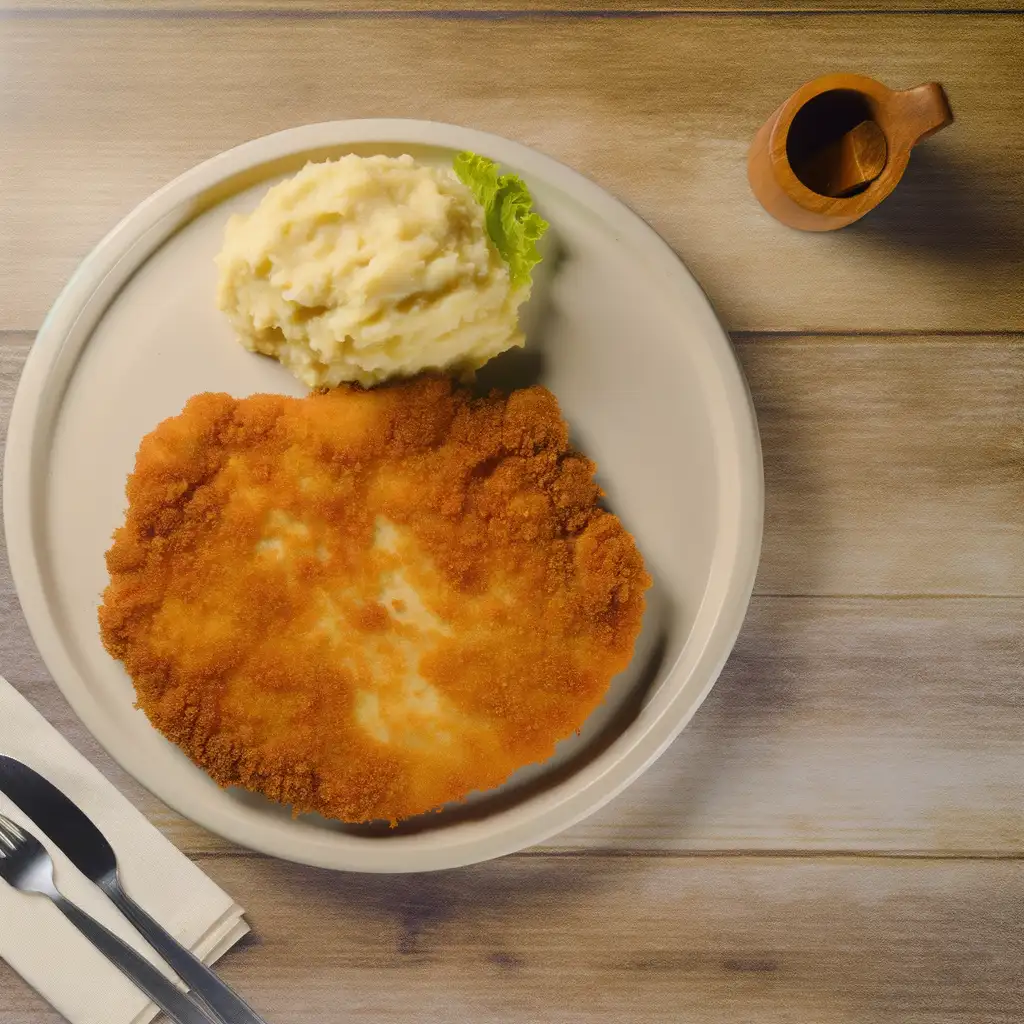



If you ever find yourself craving a place where nature and cozy mountain charm blend effortlessly,San Martín de los Andes is that kind of spot. Nestled on the edge of Lake Lácar and framed by the snow-capped Andes,the town feels like a warm embrace after a day of exploring. Walking through its streets,you’ll hear the gentle murmur of the lake mingling with the soft crunch of pine needles underfoot,while the scent of fresh wood smoke and brewing coffee drifts from inviting cafés. It’s the kind of place where time slows down just enough for you to savor every moment. The town’s character is a beautiful mix of rustic Patagonian spirit and vibrant local culture. You’ll find artisans selling handwoven textiles and wood carvings,and the friendly chatter of locals sharing stories over a glass of Malbec. The food scene is a delightful surprise—imagine tasting tender Patagonian lamb or freshly caught trout,paired with wild berries that taste like they were picked straight from the forest that morning. What really makes San Martín special is how it invites you to connect—with the landscape,with the people,and with yourself. Whether you’re hiking through the nearby Lanín National Park,kayaking on the crystal-clear lake,or simply sitting on a bench watching the sunset paint the mountains in shades of pink and gold,there’s a peaceful energy here that stays with you long after you leave.
The information on this page is currently being reviewed by Tripkliq and should be used as a guide only
Eng word: Hello
Eng pronunciation: OH-lah
Local language: Hola
Eng word: Goodbye
Eng pronunciation: ah-DYOS
Local language: Adiós
Eng word: Thank you
Eng pronunciation: GRAH-syahs
Local language: Gracias
Eng word: How much
Eng pronunciation: KWAN-toh KWEH-stah
Local language: ¿Cuánto cuesta?
Eng word: Toilet
Eng pronunciation: BAH-nyoh
Local language: Baño
Eng word: Help me
Eng pronunciation: ah-YOO-dah-meh
Local language: Ayúdame
Eng word: Yes
Eng pronunciation: SEE
Local language: Sí
Eng word: No
Eng pronunciation: NO
Local language: No
Eng word: Excuse me
Eng pronunciation: pehr-DOHN
Local language: Perdón
San Martín de los Andes was founded on February 4,1898, by Colonel Celestino Pérez. The city was established as a strategic point to secure the Argentine territory in the Patagonian region.
The Chapelco Ski Resort, one of the most famous ski destinations in Argentina, was inaugurated in 1946. It has since become a major attraction for winter sports enthusiasts from around the world.
Established in 1937, Lanín National Park is a protected area that surrounds San Martín de los Andes. It is home to the majestic Lanín Volcano and offers a variety of outdoor activities such as hiking, fishing, and bird watching.
San Martín de los Andes is located in a region historically inhabited by the Mapuche people. The city celebrates this indigenous heritage through various cultural events and museums that showcase Mapuche art, traditions, and history.
Avenue San Martín is the main street in the city, named after General José de San Martín, a national hero of Argentina. The avenue is lined with charming shops, cafes, and restaurants, making it a popular spot for both locals and tourists.
In the early 20th century, the Patagonia Train connected San Martín de los Andes with other parts of Argentina, boosting the local economy and making the city more accessible to visitors.
The Arrayanes Forest, located near San Martín de los Andes, is famous for its unique cinnamon-colored trees. This natural wonder is a popular destination for nature lovers and photographers.
Lago Lácar is a stunning glacial lake located next to San Martín de los Andes. The lake is a hub for water activities such as kayaking, sailing, and fishing, and offers breathtaking views of the surrounding mountains.
The Annual National Snow Festival is a major event in San Martín de los Andes, celebrating the winter season with various activities, including snow sports competitions, music, and cultural performances.
In San Martín de los Andes, the most common Power Adaptor is Type C, Type I.



Savory pastries filled with a variety of ingredients such as beef, chicken, or cheese, often baked or fried.

A traditional Argentine barbecue featuring various cuts of beef, pork, and sometimes lamb, cooked over an open flame or grill.

A hearty stew made with corn, beans, potatoes, and meat, traditionally enjoyed during national holidays.

Breaded and fried meat cutlet, similar to a schnitzel, often served with mashed potatoes or salad.

A sweet caramel-like spread made from slowly heating sweetened milk, commonly used in desserts and pastries.

Grilled trout, a local specialty, often seasoned with herbs and served with lemon, reflecting the region's abundance of fresh fish.

If you ever find yourself craving a place where nature’s grandeur meets cozy,small-town charm,San Carlos de Bariloche is where you want to be. Imagine waking up to the crisp,pine-scented air,with the shimmering waters of Lake Nahuel Huapi stretching out before you,framed by snow-capped Andes peaks. The vibe here is relaxed but alive—locals and travelers alike gather in rustic cafés,their laughter mingling with the clinking of coffee cups and the rich aroma of freshly brewed Argentine espresso.
Walking through Bariloche’s streets feels like stepping into a storybook. Wooden chalets with colorful shutters line the avenues,and the scent of chocolate wafts from every corner,a nod to the city’s famous artisanal chocolatiers. You’ll hear the soft crunch of snow underfoot in winter or the gentle rustle of leaves in summer,while the distant call of birds adds a natural soundtrack to your explorations. The city pulses with a blend of European alpine influences and Patagonian spirit,creating a unique cultural tapestry that’s both warm and inviting.
What really makes Bariloche unforgettable is how it invites you to slow down and savor the moment. Whether you’re hiking through ancient forests,savoring a plate of fresh trout by the lake,or simply watching the sunset paint the mountains in shades of pink and gold,there’s a deep sense of peace here. It’s a place that stays with you long after you leave,whispering stories of wild beauty and heartfelt hospitality.
If you ever find yourself dreaming of a place where nature’s grandeur meets cozy,small-town charm,Puerto Varas in Chile is exactly that kind of magic. The moment you arrive,there’s this gentle hum in the air—a mix of crisp lake breezes and the faint scent of pine from the surrounding forests. The town sits right on the edge of Lake Llanquihue,its waters shimmering like glass,reflecting the snow-capped Osorno Volcano standing tall in the distance. It’s the kind of view that makes you pause,take a deep breath,and just soak it all in.
Walking through Puerto Varas feels like stepping into a storybook. The streets are lined with charming wooden houses painted in cheerful colors,their German-inspired architecture giving the town a unique personality. You’ll hear the soft chatter of locals in cozy cafés,the clinking of coffee cups,and the occasional strum of a guitar from a nearby restaurant. The smell of fresh-baked kuchen (a kind of fruit cake) wafts through the air,tempting you to stop and savor a slice with a cup of rich Chilean coffee.
What really makes Puerto Varas special is how effortlessly it blends adventure with relaxation. You can spend your mornings hiking through lush trails or kayaking on the lake,then wind down in the evening with a hearty plate of local trout or a glass of crisp Chilean wine while watching the sunset paint the sky in shades of pink and orange. It’s a place that invites you to slow down,breathe deeply,and fall in love with the simple,beautiful rhythms of life.
Imagine stepping into a place where the wildness of nature meets the warmth of a close-knit community—that’s Ushuaia for you. Nestled at the very tip of South America,this city feels like the edge of the world,with snow-capped mountains standing guard over the deep blue waters of the Beagle Channel. The air is crisp and fresh,carrying hints of pine and salty sea spray,and when you walk along the harbor,you can almost hear the distant call of sea lions mingling with the chatter of locals and travelers alike.
Ushuaia’s charm isn’t just in its dramatic landscapes but in its spirit. The streets hum with a quiet energy—cozy cafés filled with the rich aroma of freshly brewed coffee,small artisan shops showcasing handmade woolen goods,and restaurants where you can savor Patagonian lamb or freshly caught king crab,each bite bursting with the rugged flavors of the region. There’s a ruggedness here,sure,but also a surprising softness in the smiles of the people who’ve carved out a life in this remote corner.
What really stays with you is the sense of adventure that pulses through the city. Whether you’re gearing up for a trek through Tierra del Fuego National Park,hopping on a boat to spot penguins,or simply watching the sunset paint the sky in fiery hues,Ushuaia invites you to slow down and soak it all in. It’s a place that feels alive,raw,and deeply welcoming—like a story you’re eager to be part of.
If you ever find yourself dreaming of a place where the sea breeze carries the scent of fresh pine and salty ocean spray,Puerto Montt is that kind of spot. It’s a lively coastal city in southern Chile that feels like a warm welcome wrapped in misty mornings and vibrant markets. Walking along the waterfront,you’ll hear the chatter of fishermen unloading their catch,the clinking of boats bobbing gently,and the distant call of seabirds. The air is crisp,with a hint of wood smoke from nearby homes,making you feel instantly connected to nature and community.
Puerto Montt pulses with a unique blend of Chilean culture and German influence,visible in its architecture and hearty food. The Mercado Angelmó is a must-visit—imagine stalls bursting with colorful seafood,the aroma of freshly grilled fish mingling with the tang of citrus and herbs. Grab a plate of curanto,a traditional dish cooked in a pit with shellfish,meat,and potatoes,and savor the rich,smoky flavors that tell stories of the land and sea.
Beyond the city,the surrounding landscapes are jaw-dropping—towering volcanoes,lush forests,and shimmering lakes invite you to explore. But what really stays with you is the city’s rhythm:a blend of bustling markets,friendly locals eager to share their stories,and quiet moments watching the sunset paint the sky in shades of pink and orange over the Pacific. Puerto Montt isn’t just a place to visit; it’s a place that feels like a heartfelt embrace from southern Chile.
If you ever find yourself dreaming of a place where raw nature meets cozy,small-town charm,El Calafate is that spot. Nestled on the edge of the vast Patagonian steppe,this town has a quiet energy that feels both adventurous and welcoming. The air carries a crispness that wakes you up with every breath,tinged with the faint scent of pine and earth. When you stroll through its streets,you’ll hear the soft murmur of travelers swapping stories over steaming cups of mate or rich Argentine coffee,while the distant wind whispers tales from the nearby glaciers.
What really makes El Calafate unforgettable is its connection to the natural world. The town feels like a gateway to something immense and ancient—especially when you catch your first glimpse of the Perito Moreno Glacier. Imagine standing before a colossal wall of ice,its brilliant blues shimmering under the sun,cracking and groaning as chunks calve into the turquoise waters below. It’s humbling and exhilarating all at once. Back in town,the local culture is warm and unpretentious,with friendly faces eager to share their love for the land,the sheep farming heritage,and the hearty Patagonian lamb dishes that taste like a celebration of the region itself.
Evenings in El Calafate have their own magic. The sky stretches wide and clear,perfect for stargazing,while the cozy restaurants invite you to linger over Malbec and homemade desserts. It’s a place that invites you to slow down,breathe deeply,and soak in the wild beauty that feels both timeless and alive. Trust me,once you’ve been here,you’ll carry a piece of Patagonia’s spirit with you long after you leave.
If you ever find yourself wandering through southern Chile,Valdivia is the kind of place that wraps around you like a cozy,well-worn sweater. The city hums with a gentle rhythm,where the river’s steady flow blends with the chatter of locals at the bustling Mercado Fluvial. You’ll catch the scent of fresh seafood mingling with the earthy aroma of rain-soaked wood from the historic German-style houses lining the streets. It’s a place where nature and culture feel deeply intertwined,and every corner invites you to slow down and soak it all in.
Walking along the riverbanks,you’ll hear the soft splash of boats and the distant call of seabirds,while the cool,misty air carries whispers of the nearby forests. Valdivia’s character is shaped by its rich history and vibrant community—there’s a warmth in the way people share stories over a cup of strong coffee or a glass of local craft beer. The city pulses with creativity,from lively street art to intimate music venues where folk tunes echo into the night.
What really makes Valdivia stand out is its blend of wild beauty and human touch. Whether you’re savoring freshly caught shellfish at a waterfront café or exploring the lush parks and islands just a short ferry ride away,you’ll feel a genuine connection to the land and its people. It’s a place that invites curiosity and rewards those who take the time to listen,taste,and wander a little off the beaten path.
Fake listings for vacation rentals or hotels are posted online, requiring upfront payments for properties that don’t exist or are not available.
Tourists may receive counterfeit bills as change, especially in small shops or taxis. Scammers target those unfamiliar with Argentine pesos.
Unsuspecting tourists may have their credit card information stolen at restaurants, shops, or ATMs through skimming devices.
Scammers pose as parking attendants, charging tourists to park in free public spaces or claiming to 'watch' their car for a fee.
Scammers pose as tour operators offering discounted excursions or activities, but they either overcharge or fail to deliver the promised service.
Some taxi drivers may overcharge tourists by taking longer routes or not using the meter, especially for airport or bus terminal transfers.
Some restaurants may add hidden charges or inflate the bill, assuming tourists won’t notice or question the extra costs.
Vendors may sell fake artisanal goods or low-quality items at inflated prices, claiming they are authentic local crafts.
The possession, use, and trafficking of illegal drugs are strictly prohibited in San Martín de los Andes and throughout Argentina. Penalties for drug-related offenses can be severe, including fines and imprisonment. Medical marijuana is legal under certain conditions, but recreational use of marijuana remains illegal. Tourists should be aware of these regulations and avoid any involvement with illegal drugs.
In San Martín de los Andes, as in the rest of Argentina, smoking is regulated by national and provincial laws. Smoking is prohibited in enclosed public spaces, including restaurants, bars, and public transportation. There are designated smoking areas in some public places, but it is important to look for signs indicating where smoking is allowed. Violations can result in fines.
Vaping is subject to similar regulations as smoking in San Martín de los Andes. It is prohibited in enclosed public spaces and public transportation. The sale of e-cigarettes and vaping products is also regulated, and it is advisable to check local rules regarding their purchase and use. As with smoking, look for designated areas where vaping is permitted.
What are other people saying about San Martín de los Andes?
Recent Social posts about San Martín de los Andes
There is nothing to show you for now.